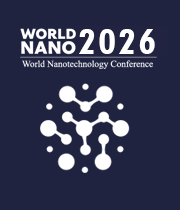Nanobubble
Nanobubbles, minute gas-filled bubbles on the nanoscale, have garnered increasing attention in various fields due to their unique properties and versatile applications. These tiny bubbles, typically ranging from tens to hundreds of nanometers in diameter, can be generated and stabilized in liquids. In the realm of medicine, nanobubbles are explored for their potential in drug delivery, where they can act as carriers for therapeutic agents, facilitating targeted delivery to specific cells or tissues. In agriculture, nanobubbles find application in water treatment and irrigation systems. The unique physicochemical properties of nanobubbles make them effective in enhancing oxygen solubility, potentially improving soil conditions and promoting plant growth. In environmental science, nanobubbles play a role in wastewater treatment, aiding in the removal of pollutants and promoting efficient water purification processes. The study of nanobubbles extends into the realm of nanotechnology, where researchers investigate their formation, stability, and behavior at the nanoscale. The ability of nanobubbles to enhance processes such as ultrasound imaging and cleaning technologies showcases their potential impact on various industries.

Harry E Ruda
University of Toronto, Canada
Raman Singh
Monash University, Australia
Paulo Cesar De Morais
Catholic University of Brasilia, Brazil
Xiao Hong Nancy Xu
Old Dominion University, United States
S V A R Sastry
Harcourt Butler Technical University, India
Vinayak Adimule
Angadi Institute of Technology and Management, India



Title : Circumventing challenges in developing CVD graphene on steels for extraordinary and durable corrosion resistance
Raman Singh, Monash University, Australia
Title : Nanomaterial-based bio-lubricant additives for improved efficiency and environmental sustainability in automotive applications
S V A R Sastry, Harcourt Butler Technical University, India
Title : Evaluating cytotoxicity of metal-doped tin oxide nanoparticles
Paulo Cesar De Morais, Catholic University of Brasilia, Brazil
Title : 40,000 implants in humans and no failure: The impact of nanomedicine
Thomas J Webster, Hebei University of Technology, China
Title : Enhanced photoluminescence and fluorescence properties of flake-like Co3O4@Cs2O bimetallic oxide nanostructures
Vinayak Adimule, Angadi Institute of Technology and Management, India
Title : Lipid nanoparticles formulations: From bench scale to industrial scale
Mohammad A Obeid, RAK Medical and Health Sciences University, United Arab Emirates